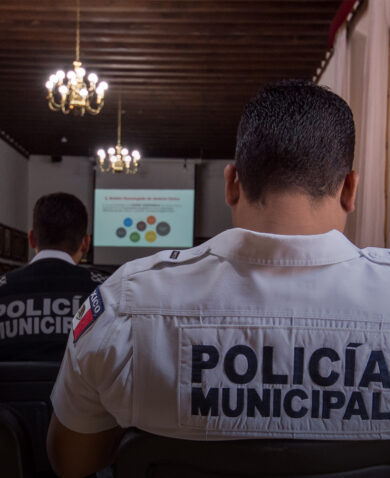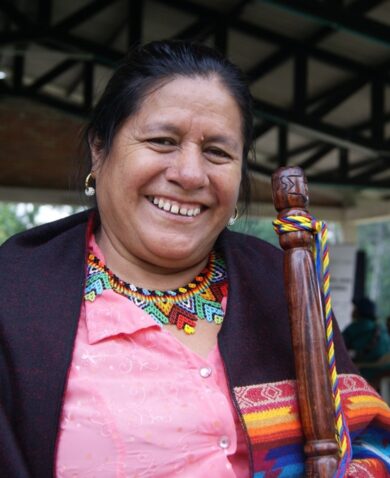
Target Interventions to Reduce Homicides in Mexico
March 30, 2017 | 4 Minute ReadShould we prevent the root causes of violence or reduce immediate triggers? According to Enrique Betancourt, the best approach is counterintuitive. Image credit: Igarapé Institute.
Homicides in Mexico had been steadily falling since hitting their peak between 2010 and 2011, but sudden spikes in 2015 and 2016 are causing the international community to look around for answers. October 2016 was the most violent month in nearly four years, appearing to wipe out recent progress.
The good news is that based on disaggregated data, we know enough to start addressing the unavoidable challenge of reducing homicidal violence in Mexico. The key here is to walk away from generalizations and focus on the places, the people, and the social behaviors where the majority of the problem is concentrated. We know where homicides happen, the profile of victims and perpetrators, and what strategies have worked to reduce homicides. With this knowledge, it’s possible to work toward reversing this sudden spike through focused and evidence-based programming.
Homicides are highly concentrated
Although homicide might be a problem of global concern, this is a problem disproportionately localized in very specific neighborhoods, and demographics (just Mexico, Brazil, Colombia, and Venezuela account for 25 percent of global homicides).
To illustrate this extreme concentration, the state of Yucatán in Mexico has a homicide rate of 2.7 per 100,000 inhabitants while the state of Guerrero has a homicide rate of 67.2. At an even more granular level, there are specific neighborhoods where violence is staggering. While Mexico City’s homicide rate is 13.4 overall, the Congreso police district’s rate is 1,123.
Homicides are also concentrated demographically. Most perpetrators are young, underserved men, and so are most victims. Victims and perpetrators tend to know each other, and 71 percent of homicides in Mexico in 2010 occurred in the same municipality where the perpetrators lived. Homicides are also driven by social dynamics like conflicts between groups. Combining these factors of geography and demography shows where policy and programs need to target, for example by focusing on young, disenfranchised men in particular neighborhoods of Acapulco, who are exponentially more likely to be involved in homicide than the national average.
Reduction first, prevention after
Not only do we know who is likely to be involved in homicides and where — we also have causal frameworks to design solutions. Traditional prevention frameworks call for addressing the root causes of violence, which makes a lot of sense. Many studies relate violence to its root causes, which include inequality, social exclusion, weak institutional contexts, and other important variables. But counterintuitive to this approach, we’ve learned that prevention is unfortunately not retroactive. We need to effectively address today’s violence by focusing mainly on more proximate causes (drivers and triggers) and aiming for reduction first. Drivers are factors like school dropout, teen pregnancy, and dysfunctional families; while triggers are more immediate, such as group conflicts that involve retaliation, or access to firearms and alcohol.

To reduce homicides, we need to break the cycle of violence by focusing directly on the most violent groups and collaborating between the police, justice sector, and the community. We can learn from several programs that have been successful.
- Focused deterrence (U.S.): Begun in Boston in 1996 under the name of Operation Ceasefire, this approach is based on focusing the attention of a tailored partnership of law enforcement, the justice sector, and community actors on a small number of chronic offenders. The program uses deliberate, routine interactions with law enforcement while also framing support for offenders as a moral and practical obligation. Operation Ceasefire achieved a 63 percent reduction in youth homicides in Boston and has been replicated across the U.S. with great results.
- Paz y Justicia (Honduras): This program in Tegucigalpa and San Pedro Sula, whose name means “Peace and Justice,” involves hot spot analysis, criminal investigation, case management, community engagement, support to address trauma, and targeted financial assistance. Project evaluations showed an 80 percent reduction in homicides in intervention areas.
- Fica Vivo (Brazil): The Minas Gerais-based initiative uses hot spot analysis, police saturation, and a strategy known as qualified repression, which includes many of the principles of focused deterrence. Fica Vivo, which translates to “Stay Alive,” produced a 69 percent decrease in homicides in Minas Gerais’ capital, Belo Horizonte.
Saving lives requires focus
If we understand who’s involved in homicides, where they will take place, and strategies that have worked to prevent homicide, what should we do next to reverse Mexico’s homicide spike? Here are five principles to guide our efforts.
- Start small: Pilot programs in a small number of neighborhoods in one or two cities before expanding nationwide.
- Partner justice, police, and social prevention efforts: Work across all three sectors and prioritize implementation at the street level instead of waiting for large-scale reforms.
- Focus on homicides: Concentrate specifically on reducing homicides. Reduction or prevention efforts that don’t prioritize specific types of violence tend to fail.
- Develop the capacity to engage those at higher risk: Work directly with young men who are at the highest risk of being involved in homicide. To identify these high-risk individuals, remember that the best predictor of future behavior is past behavior and make use of existing youth assessment tools.
- Improve data collection: Invest more in local intelligence and social network analyses to build the evidence base, and use this data to inform decision-making.
To save lives, we need dedicated projects that focus on homicide without becoming sidetracked by other issues. Just as a cancer treatment wouldn’t try to address diabetes, violence reduction programs should focus specifically on types of violence separately from others, which deserve their own efforts. Studies have shown that it’s possible to reduce homicides dramatically through evidence-based policy and programming, but it will take this kind of focus to do so.
































